For additional information relating to this article, please contact:
February 09, 2022CENSUS POPULATION AND DWELLING COUNTS, 2021 Statistics Canada has released the first results from the 2021 Census. These results report population counts as well as dwelling counts.
Statistics Canada notes: "The number of Canadians we counted during the 2021 Census may differ from the demographic estimates or the population modelled according to the population clock for a similar date. The Census of Population provides a snapshot of the population at a specific moment in time (May 11, 2021, for this census) and its consistent methodology allows for robust historical comparisons with data from previous censuses. Inevitably, however, some people were not counted, or were counted more than once, for various reasons...As we do after every census, Statistics Canada conducts undercoverage and overcoverage studies to determine the number of people who were omitted or enumerated more than once and releases the results in the year following the first release of census counts. The difference between undercoverage and overcoverage is called net undercoverage. These study results are used in conjunction with the census counts to produce demographic estimates that take into account net undercoverage. Statistics Canada's demographic estimates complement the census counts and are available for Canada, the provinces, the territories and various subprovincial geographic levels on a more frequent basis (quarterly and annually)...Canada's population clock (modelled in real time) is also based on data from demographic estimates."
The 2021 Census recorded a population count of 969,383 as of May 2021. This was up 5.0% from the count of 923,598 reported in May of 2016. The increase in Nova Scotia's Census population count was the fastest since the growth from 1971 to 1976.

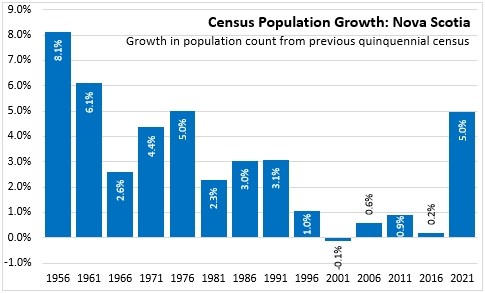
As Statistics Canada notes, population counts are different from the population estimates that adjust for net undercoverage. The population estimate for July 1, 2021 was 992,055 (and this was based on the results of the 2016 Census).
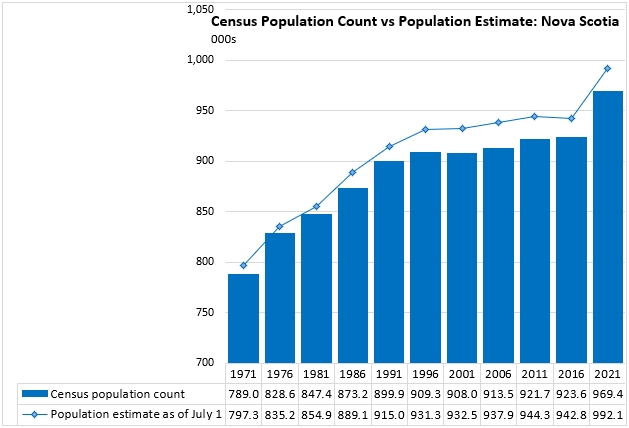
Across Canada, the Census population count increased by 5.2% from 2016 to 2021. The fastest growth was reported in Yukon Territory, Prince Edward Island and British Columbia. Only Newfoundland and Labrador and Northwest Territories reported a lower Census population count in 2021 than in 2016. Statistics Canada observed that the population count of the Maritimes grew at a faster pace than at any time since the 1970s and also faster than the population count of the prairie provinces for the first time since the 1940s.
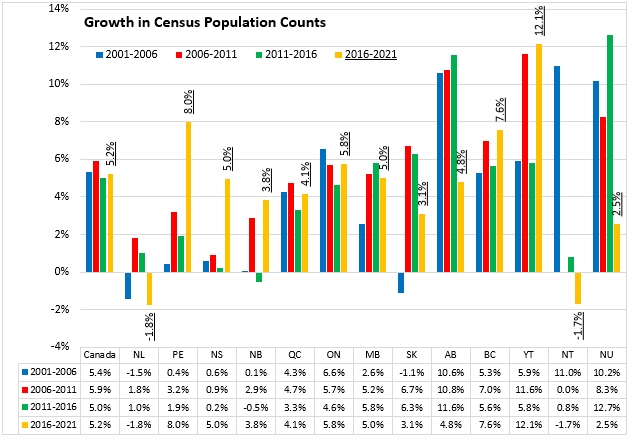
Today's release of Census population counts also reports on the distribution of Canada's population by the size of community in which they live. Those who live in population centres (large urban centres, medium population centres, small population centres) accounted for about 85.2% of Canada's population. In Nova Scotia, 58.9% of the Census population count lived in a population centre in 2021.
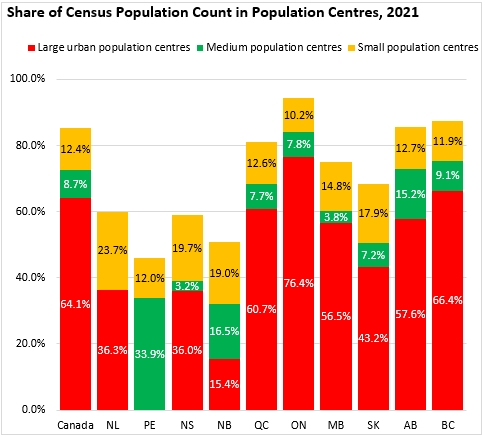
The share of the Census population count living in a rural area was 41.1% in Nova Scotia. The rural share of the population count was highest in Atlantic Canada as well as in Manitoba and Saskatchewan. Across Canada, 17.8% of the 2021 Census population count lived in a rural area. Prince Edward Island and New Brunswick report the highest rural shares among provinces. The lowest rural shares were in British Columbia, Ontario, Alberta and Quebec.
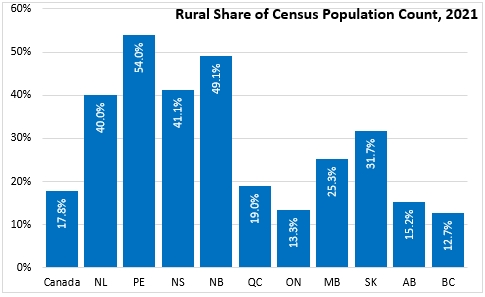
Statistics Canada's population counts are available for range of geographic categories. The following tables report Census population counts for Nova Scotia's Census Divisions (the 18 counties of the province) as well as for Nova Scotia's Census Subdivisions, which Statistics Canada categorizes as either towns, regional municipalities, municipal districts, Indian reserves or subdivisions of the county municipality.
In addition, Statistics Canada reports Census population counts for designated places that are located within certain Census Subdivisions.
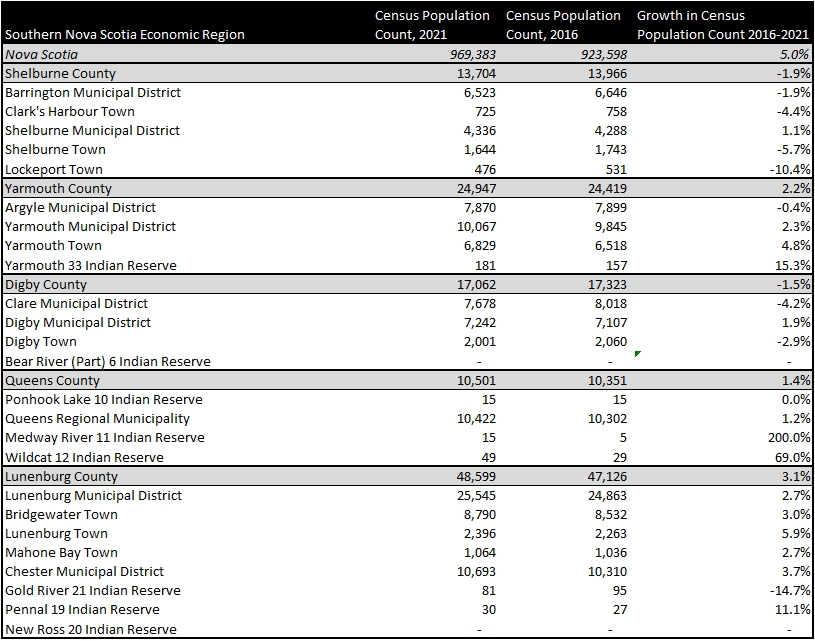

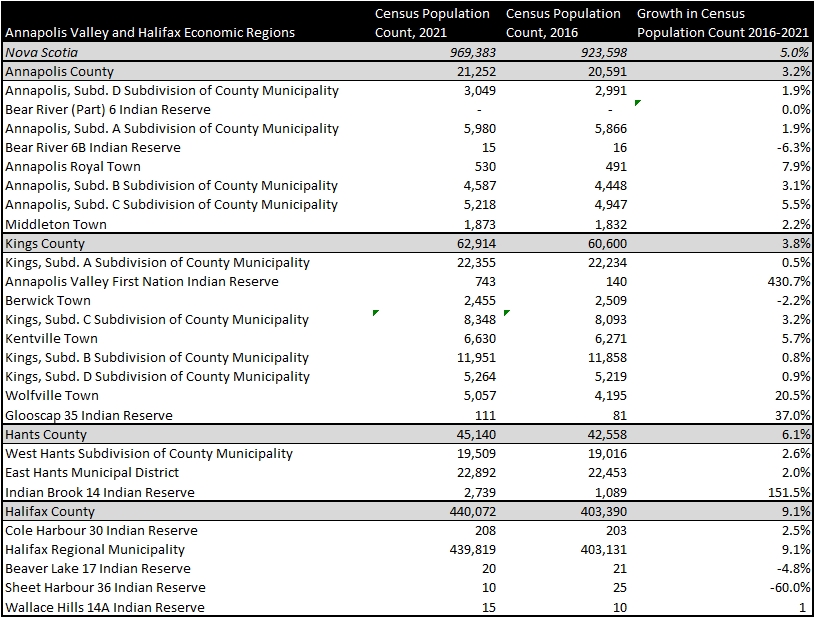
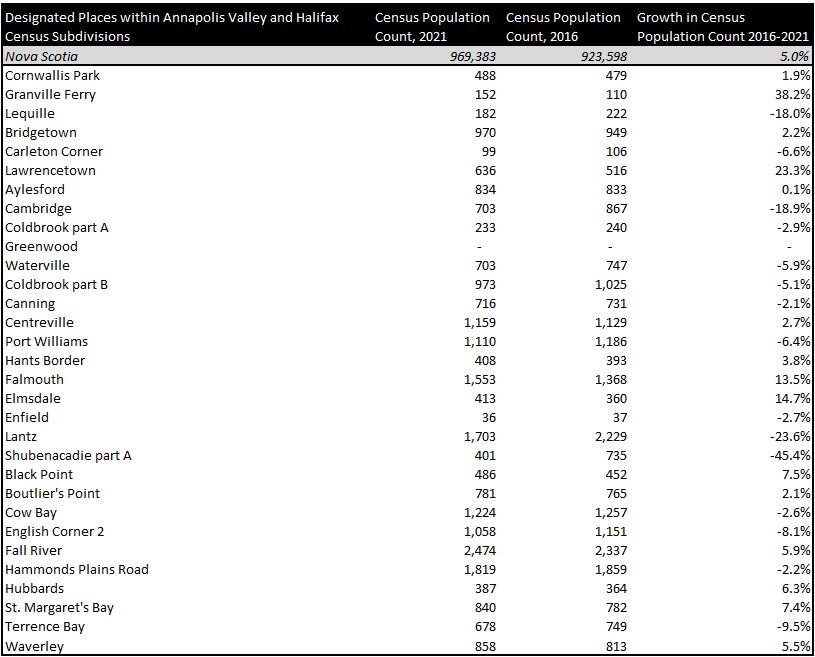
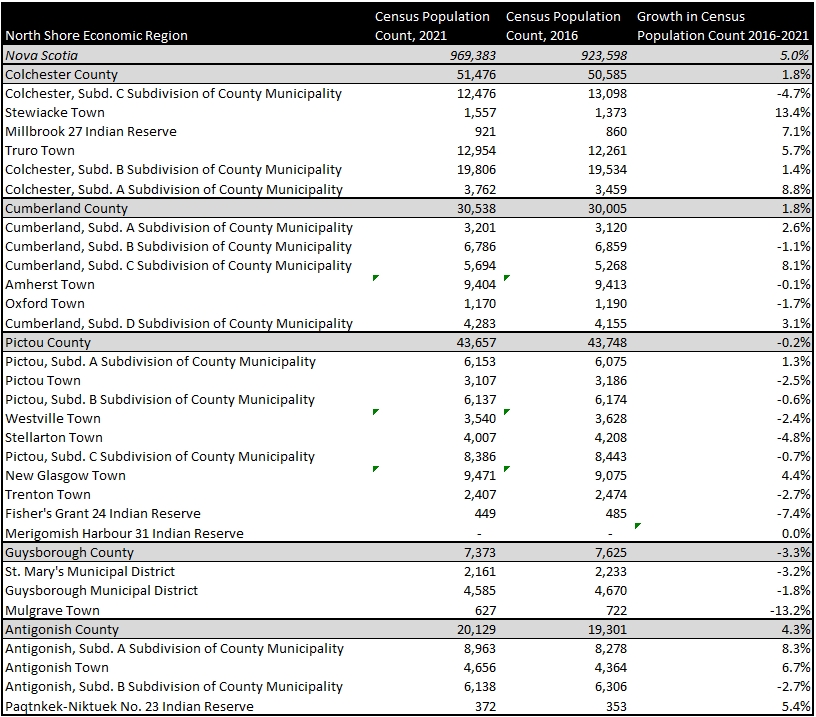
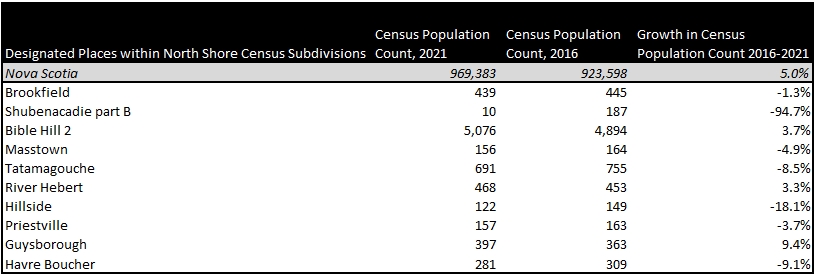
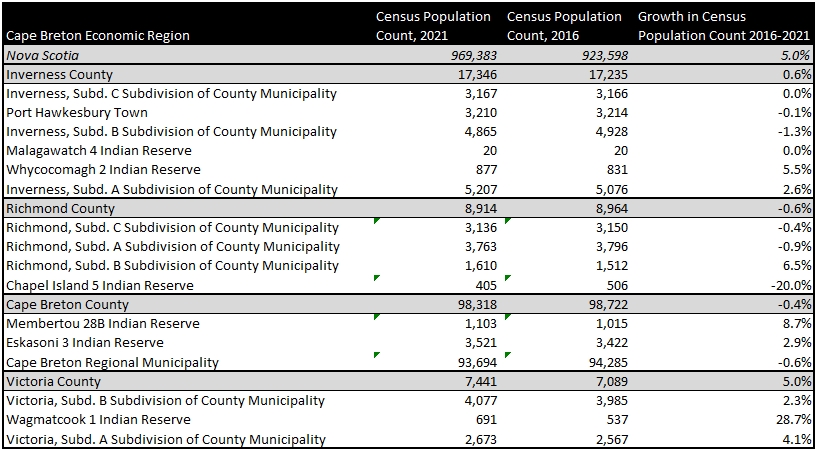
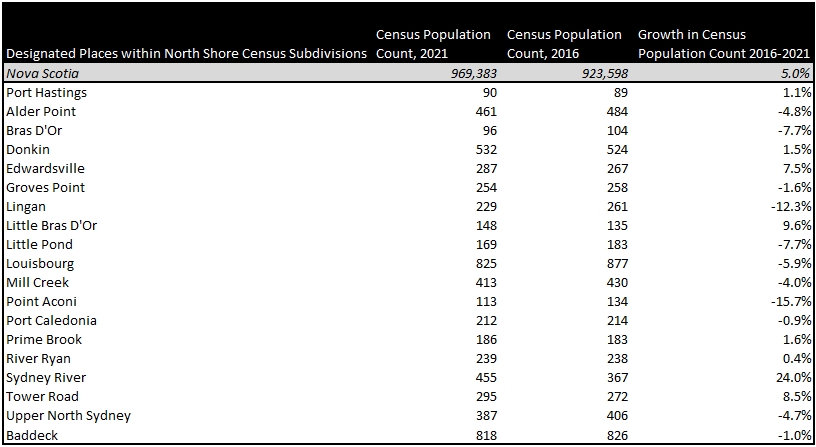
Dwelling counts
As part of conducting a Census, Statistics Canada determines the number of private dwellings. The 2021 Census reports on 428,228 dwellings - an increase of 6.5% from the dwellings counted in the 2016 Census. The count of private dwellings typically grows faster than the population count. However, the gap in Nova Scotia's growth rates between population counts and dwelling counts narrowed in the 2021 Census.
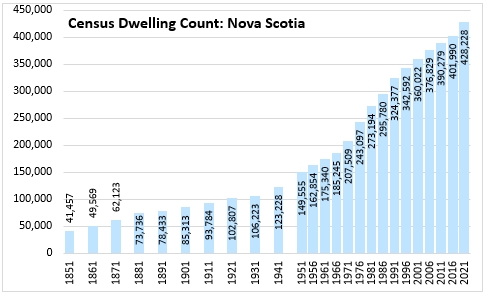
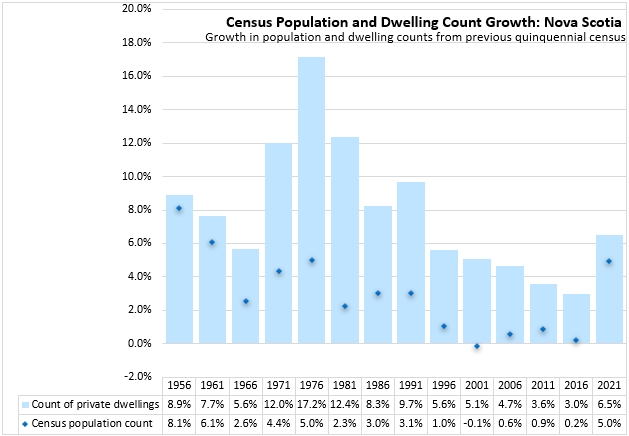
Source: Statistics Canada. Table 98-10-0001-01 Population and dwelling counts: Canada, provinces and territories; Table 98-10-0002-01 Population and dwelling counts: Canada and census subdivisions (municipalities); Table 98-10-0004-01 Population and dwelling counts: Canada, provinces and territories, census divisions, census subdivisions (municipalities) and designated places; Table 98-10-0007-01 Population and dwelling counts: Canada and census divisions; Table 98-10-0011-01 Population and dwelling counts: Canada and population centres; Table 98-10-0013-01 Population and dwelling counts: Canada and aggregate dissemination areas; Table 98-10-0014-01 Population and dwelling counts: Census metropolitan areas, tracted census agglomerations and census tracts; Table 98-10-0015-01 Population and dwelling counts: Canada, provinces and territories, census subdivisions and dissemination areas; Table 98-10-0016-01 Population and dwelling counts by the Statistical Area Classification; Table 98-10-0017-01 Population and private dwellings occupied by usual residents and intercensal growth, 1851 to 2021 censuses; Table 98-10-0008-01 Population counts, population centre size groups and rural areas
Census release schedule